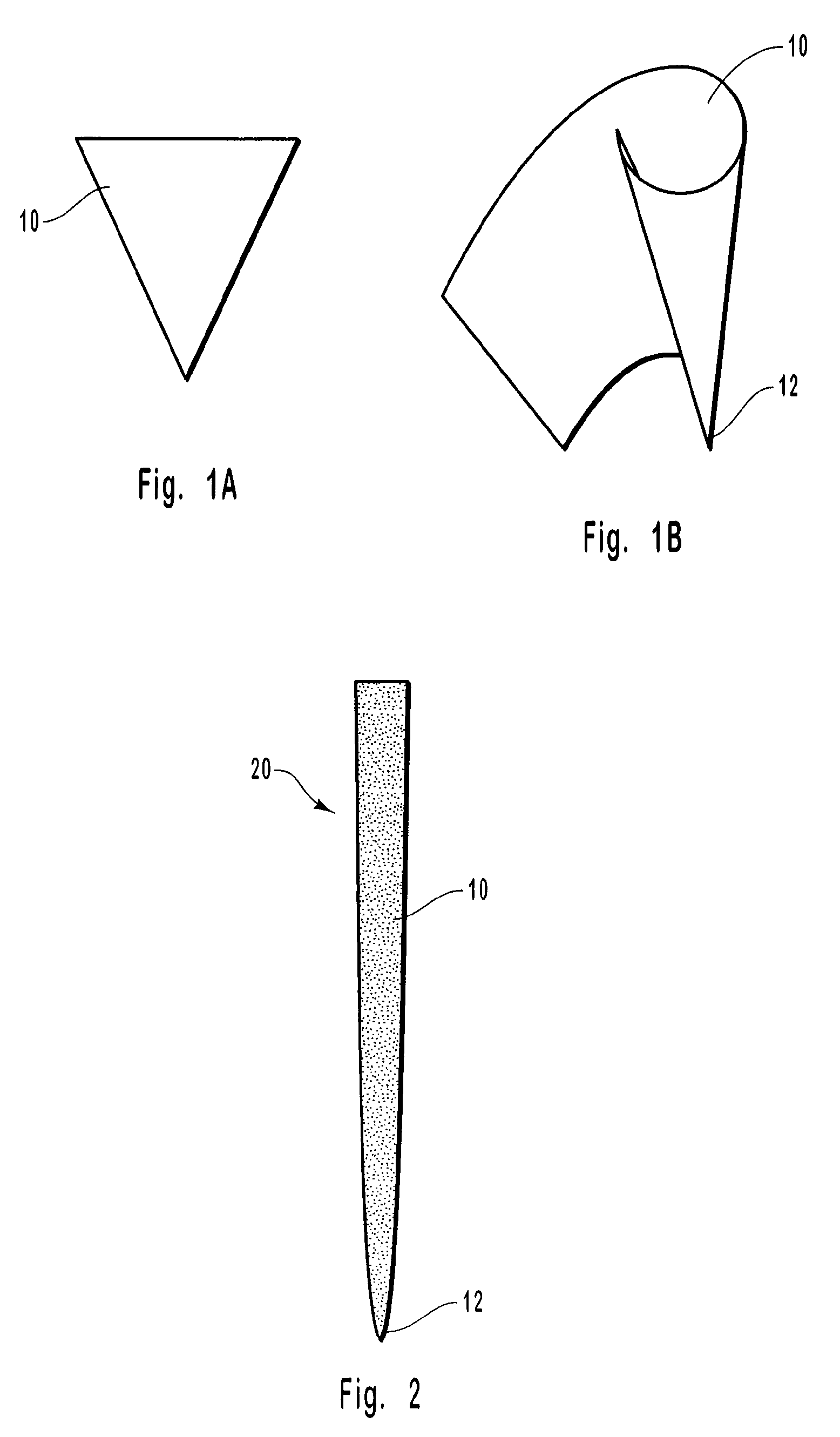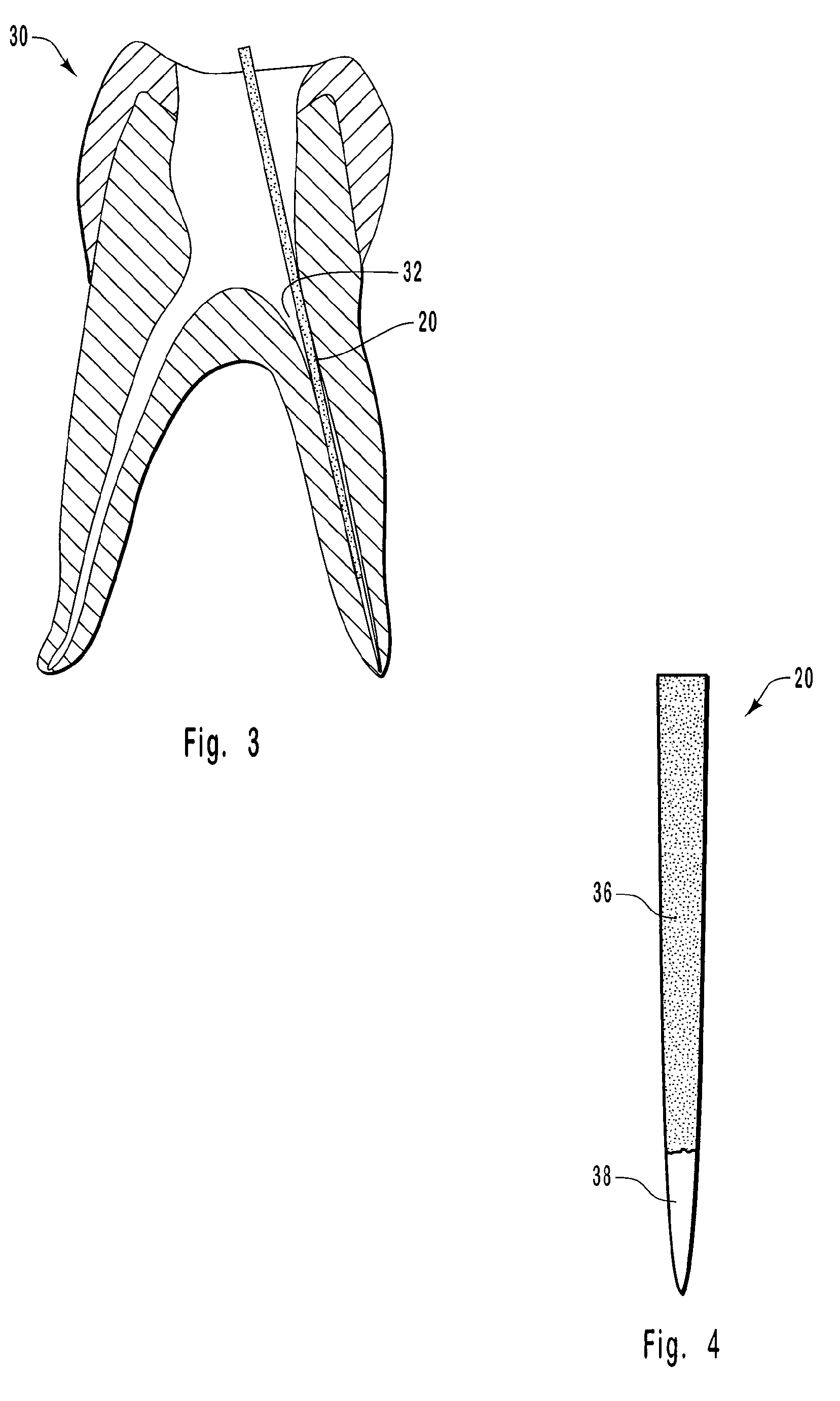Water and sodium hypochlorite indicating endodontic monitoring devices
a monitoring device and water-based technology, applied in the field of endodontic monitoring devices, can solve the problems of inability to determine whether all the moisture has been removed from the canal by visual inspection alone, discourage the use of this method, and achieve the effect of accurate differentiation
- Summary
- Abstract
- Description
- Claims
- Application Information
AI Technical Summary
Benefits of technology
Problems solved by technology
Method used
Image
Examples
example 1
[0037]A pH changing solution used to manufacture water-indicating points according to the invention was made by mixing together the following components:
[0038]
CaO0.1%Water99.9%
[0039]The pH changing solution was sprayed onto a plurality of paper points. The wetted points were then placed into an oven at about 105° C. to dry. The dried, treated paper points were then sprayed with an anhydrous pH sensitive indicator solution made by mixing together the following components:
[0040]
Phenolphthalein0.1%Isopropyl alcohol99.9%
[0041]The wet paper points were again allowed to dry. When wetted with water they turned from white to bright pink. To make a paper point that can also detect the presence of aqueous sodium hypochlorite within a root canal, a dye, such as FD&C Blue #1 is applied to the paper point to give it an initial color when dry. In the presence of moisture, the pH indicator and dye blend to impart a second color to the device. In the presence of sodium hypochlorite, the dye is blea...
example 2
[0042]A pH changing and dye solution used to manufacture water and sodium hypochlorite indicating points according to the invention was made by mixing together the following components:
[0043]
Deionized water98.49%(e.g., 97.9 to 98.9%)Sodium Carbonate 1.5%(e.g., 1.0 to 2.0%)FD&C Blue #1 0.01%(e.g., 0.01 to 0.1%)
[0044]The pH changing solution was applied to a plurality of paper points by dipping the points in the aqueous solution. The wetted points were then placed into a convection oven at about 80° C. to dry. The dried, treated paper points were then dipped into an anhydrous pH indicator solution made by mixing together the following components:
[0045]
Acetone99.5%(e.g., 99.0 to 99.8%)Phenolphthalein0.5%(e.g., 0.2 to 1.0%)
[0046]The wetted paper points were again allowed to dry. The paper points were initially blue as a result of the blue dye. When inserted into a dry root canal, the points remained the same blue color. When wetted with water they turned from blue to purple as the pheno...
example 3
[0047]Any of the foregoing examples is modified to include bromothymol blue as the pH indicator and citric acid as the pH changing material. The amount of bromothymol blue can be increased or decreased by 0.1% increments until the best color change is noticed. The amount of citric acid can be increased or decreased by 0.1% increments until the best color change is noticed.
PUM
 Login to View More
Login to View More Abstract
Description
Claims
Application Information
 Login to View More
Login to View More - R&D
- Intellectual Property
- Life Sciences
- Materials
- Tech Scout
- Unparalleled Data Quality
- Higher Quality Content
- 60% Fewer Hallucinations
Browse by: Latest US Patents, China's latest patents, Technical Efficacy Thesaurus, Application Domain, Technology Topic, Popular Technical Reports.
© 2025 PatSnap. All rights reserved.Legal|Privacy policy|Modern Slavery Act Transparency Statement|Sitemap|About US| Contact US: help@patsnap.com



